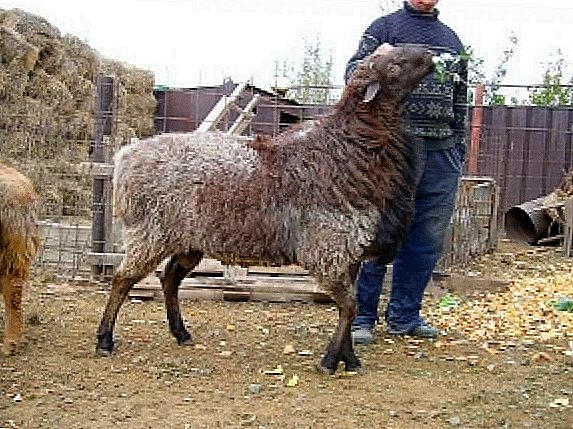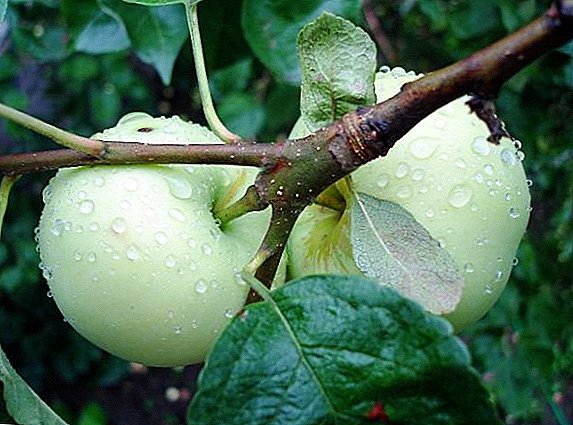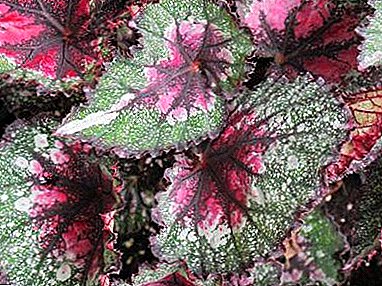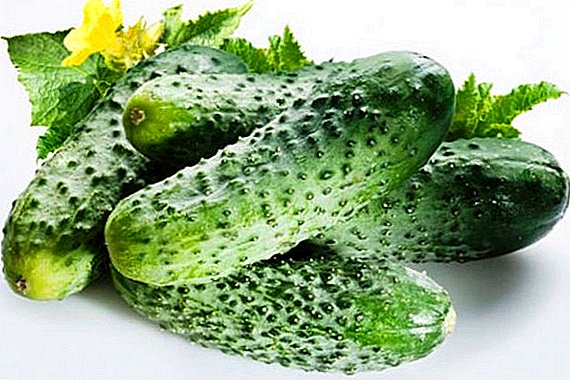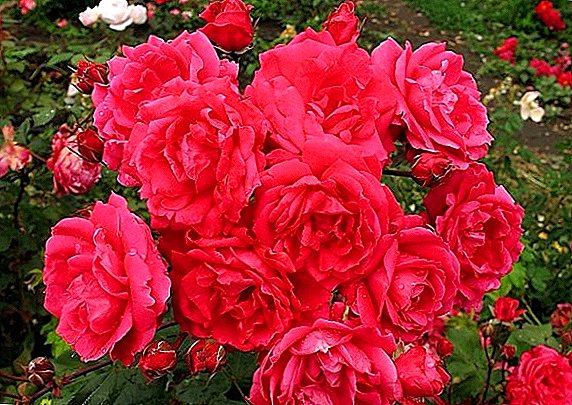 Diseases of roses are mainly found on the flower beds of inexperienced gardeners who pay little attention to the preplant treatment of soil, the choice of seedlings, and also naively think that the flowers do not get sick. So that you also know why rosebuds dry, and how to cope with the main diseases of these flowers, below we have prepared instructions for treating them.
Diseases of roses are mainly found on the flower beds of inexperienced gardeners who pay little attention to the preplant treatment of soil, the choice of seedlings, and also naively think that the flowers do not get sick. So that you also know why rosebuds dry, and how to cope with the main diseases of these flowers, below we have prepared instructions for treating them.
Why are roses sick?
Anyone who loves the threat should know their diseases, as well as their causes. Flowers can get sick for various reasons, and basically they are all related to the carelessness of the gardener: 
- often a plant seedling is acquired by an already infected one or another disease, especially if it is bought from the hands; for this reason, when purchasing seedlings, you should contact specialized breeding grounds;
- a flower may be infected by an infection or parasites brought to the flower garden by other plants;
- diseases are easily transmitted from one bush to another, so if you find one diseased plant, immediately remove it from the garden;
- many infections may be in the ground.
So when planting roses, it is important to properly prepare the soil and choose neighbors in the flowerbed, and also not to forget about regular feeding and pruning. If we had to face the diseases of roses, then we have prepared their description and treatment below.
Did you know? Roses are not only horticultural crops, they are also found in wild conditions, some of which are capable of showing incredible endurance. For example, there is a variety of these flowers, which has successfully got accustomed even in the area of the Arctic Circle.
Methods to combat infectious burns

An infectious burn appears on the rose bushes in the form of reddish spots, which can eventually degenerate and completely kill the plant. The reason for the development of this rosary problem is the excessive accumulation of moisture under cover during the winter, excess nitrogen fertilizers in the soil and weakening of the shoots due to the presence of wounds. The fungus, which is the cause of an infectious rose burn, can be passed from plant to plant through the pruner.
The most effective way to deal with an infectious burn is to regularly prevent it:
- remove leaves and shoots on which there are lesions of infection;
- Before sheltering for the winter, the bushes and the soil around them should be sprayed with a solution of ferrous sulfate (approximately 30 g per liter of water);
- it is necessary to cover rose bushes only in dry weather with air temperature not higher than + 10 ° С;
- after removing the shelter from the bushes, they can also be treated with Bordeaux mixture at a concentration of 1%;
- during pruning of roses, all tools must be disinfected;
- Vegetative shoots It is important to get rid of the affected areas by cutting them out and processing garden pitch.
How to remove rust from roses, and why it appears
 Another disease is rose rust, the causative agent of which is represented as a particularly dangerous fungus. It is capable of spraying its own disputes, thereby also affecting neighboring plants. You can notice rust on rose bushes even in spring, since this disease causes the last year's shoots to crack and pollen is spilling out. The most susceptible to this disease are weak plants that lack nutrients and moisture. In some cases, rust causes weather conditions.
Another disease is rose rust, the causative agent of which is represented as a particularly dangerous fungus. It is capable of spraying its own disputes, thereby also affecting neighboring plants. You can notice rust on rose bushes even in spring, since this disease causes the last year's shoots to crack and pollen is spilling out. The most susceptible to this disease are weak plants that lack nutrients and moisture. In some cases, rust causes weather conditions.
To prevent rust on the roses and help the flowers get rid of it, it is important to use the following rules:
- Try as early as possible to open the rose bushes in the spring, so that they are not worn out.
- Affected and dead shoots must be cut and burned.
- To sustain the vital activity of the affected plants, they are sprayed with a solution of Bordeaux liquid, adding 4 g per liter of water.
- In order not to bring the disease to the rose garden through an infected seedling, be sure to dip it in a 1% solution of copper sulphate before planting.
- If you cannot get rid of rust on the plant within a year, donate it, otherwise the infection will move to other residents of the flowerbed.
 Also, do not forget that roses love to grow in a sunny place and need rich fertile soil. The soil under the rose bushes should have good drainage, and the acidity should not go beyond the value of 7.5. Strong bushes will be more resistant to rust.
Also, do not forget that roses love to grow in a sunny place and need rich fertile soil. The soil under the rose bushes should have good drainage, and the acidity should not go beyond the value of 7.5. Strong bushes will be more resistant to rust. Important! For good growth, roses require a lot of moisture, but they need to be watered rarely, but it is very abundant.
Mealy dew: removal of mealy plaque from the leaves and stem of a plant
This disease does not manifest itself only if the humidity of the air does not rise above 60%, and the temperature is in the range of 16 to 18 ° C. In a situation with unstable weather conditions, it is difficult to avoid its appearance. Mealy dew often forms mold on the roses, which makes them completely unsightly, since the disease affects both the stems, leaves, and buds, and even thorns. The longer the plant will hurt, the broader the patches become. Since young shoots of plants often suffer from powdery mildew, without taking measures to combat the disease, the rose may not bloom.
To cope with powdery mildew and prevent its re-emergence, it is necessary to resort to such measures:
 1. Every autumn, trim all diseased shoots, and burn leaves that have fallen from them.
1. Every autumn, trim all diseased shoots, and burn leaves that have fallen from them.
2. Digging the flower bed, in which the raised layer must be turned over, which will lead to the death of pathogens from insufficient air.
3. Spraying of roses in the autumn with the help of a 3% solution of copper sulphate.
4. Spraying the bushes during the growing season with a copper-soap solution (200-300 household or liquid soap to 9 liters of rainwater, into which another liter of water should be poured, in which 25-30 g of copper sulfate was previously dissolved).
5. Spraying roses with a suspension of colloidal sulfur (1%). This is necessary to stimulate the growth of plants, as well as increase their "immunity" to the disease.
6. Fertilizing flowers with fertilizers that contain potassium. But in no case should not use nitrogen, as it only exacerbates the situation.
7. When powdery mildew on roses progresses particularly strongly, the bushes can be sprayed with a solution of 50 g of soda ash in 10 liters of water.
 8. In autumn and spring, the soil around the bushes should be fertilized with ash in a concentration of not more than 120 g per 1 m2. At the same time, it is necessary to cover it with an upper layer of soil. Infusion of ashes sick bushes can be sprayed (for this prepare a solution of 100 g of ash and 10 liters of water, which should stand for 5 days), which should be done every 7 days.
8. In autumn and spring, the soil around the bushes should be fertilized with ash in a concentration of not more than 120 g per 1 m2. At the same time, it is necessary to cover it with an upper layer of soil. Infusion of ashes sick bushes can be sprayed (for this prepare a solution of 100 g of ash and 10 liters of water, which should stand for 5 days), which should be done every 7 days.
9. Fight with the mycelium will help and infusion of mullein, which in 10 liters of water will need about 1 kg. Spraying should also be carried out once a week.
Spraying of bushes is important to carry out until the traces of powdery mildew disappear completely.
Important! Spud roses should not be peat, and the usual sand. Due to this, during the first thaw, the bushes will not begin to grow, but will continue to sleep until the arrival of real heat.
Leaf spot and elimination
Black-brown spots on the leaves and stems of roses causes a fungus, which shows the highest activity only in the second half of summer. Spotting can lead to falling leaves and completely destroy the rose, because it is very difficult to get rid of it - the parasites can even hibernate on the shoots.
It is possible to get rid of spotting only by applying a whole range of measures:
- all affected shoots and leaves are immediately cut off and burned;
- every autumn, soil digging is carried out, in which it is important to completely turn over the soil layers in order to limit the access of air;
- the use of a special preparation for spraying bushes, which should be carried out both in autumn and in early spring.
How to deal with gray mold: a description of the disease
 Gray decay is dangerous because with almost completely healthy shoots, the affected rose bushes will not be able to bloom anyway, since the fungus of this disease often affects the buds and the upper parts of the shoots. The most susceptible to this disease are white and pink roses, which receive an insufficient amount of nutrition and moisture. Gray fungus mycelium is fairly resistant to temperature extremes, so it calmly experiences the winter, and continues to reproduce in the spring using spores.
Gray decay is dangerous because with almost completely healthy shoots, the affected rose bushes will not be able to bloom anyway, since the fungus of this disease often affects the buds and the upper parts of the shoots. The most susceptible to this disease are white and pink roses, which receive an insufficient amount of nutrition and moisture. Gray fungus mycelium is fairly resistant to temperature extremes, so it calmly experiences the winter, and continues to reproduce in the spring using spores.
This disease is also inherent in strawberry and strawberry bushes, planting roses near which is not recommended. In order to prevent the development of gray rot, rose bushes should be planted over a wide enough space so that each plant is well lit. Watering roses is better in the morning or in the middle of the day, because after the evening watering they will not have time to dry out by night.
It is better to tear and burn all affected plants to destroy the fungus itself. At the first signs of gray rot, you can use a horsetail horsetail for spraying, and if the lesions have spread widely in the bushes, it is better to resort to a solution of foundationol in the amount of 0.2% per liter of water.
Bacterial cancer on roses
 Bacterial cancer of the rose is one of the most common problems that gardeners have to face. This disease can affect not only the stems, but also the roots of a flower, for which reason it is rarely saved.
Bacterial cancer of the rose is one of the most common problems that gardeners have to face. This disease can affect not only the stems, but also the roots of a flower, for which reason it is rarely saved.
Root cancer
This type of disease is characterized by the formation of solid growths on the roots of the plant, which eventually begin to rot. This leads to the drying of the bush, since the growths prevent the entry of moisture to the shoots. The cause of root cancer in rose bushes is damage to their root system during planting, as well as the cultivation of flowers on clay soils with a high nitrogen content.
If you notice such symptoms on your rose bushes, be sure to cut off all growths and dip the entire root system in 1% solution of copper sulphate for 2-3 minutes. After that, the roots are washed in water, and the plant can be planted in specially prepared soil.
However, if the roots of a rose are completely affected by cancer, and its traces are even on the root neck, it is better to burn the plant immediately.
Cancer stems
 Stem rose cancer needs immediate treatment, since its causative agent stably reacts even to severe winter frosts and can rage very intensely in the spring. It can take up to 3 years to fully heal a plant.
Stem rose cancer needs immediate treatment, since its causative agent stably reacts even to severe winter frosts and can rage very intensely in the spring. It can take up to 3 years to fully heal a plant.
In the process of fighting the cancer of the stems in the rose bushes, it is important to regularly examine the flowers and remove all the affected areas. Every year, when the kidneys swell, the affected bushes should be treated with a solution of zinc sulfate (to do this, dilute 300 g of the substance in a liter of water).
For preventive spraying, you can also use solutions from:
· Copper sulfate or Bordeaux liquids - 200 g of the substance will be needed for 10 liters of water;
· Oxychloride copper (10 l - 40 g of the substance);
· Topsina-M (for 10 l of water - 20 g).
A weakened cancer plant will also need additional feeding. To this end, at the end of the summer, it is useful to strengthen rose bushes with fertilizers rich in potassium. Before sheltering for the winter, it is important to spray such roses with 2% Bordeaux acid.
Cytosporosis and its treatment
 A symptom of this disease is a cardinal structural change of the bark on the shoots of rose bushes. Under the influence of the causative agent of cytosporosis, it first becomes brown and then begins to die off. Also, on the surface of the affected areas, many inflamed bumps appear over time, and the cortex itself begins to pee.
A symptom of this disease is a cardinal structural change of the bark on the shoots of rose bushes. Under the influence of the causative agent of cytosporosis, it first becomes brown and then begins to die off. Also, on the surface of the affected areas, many inflamed bumps appear over time, and the cortex itself begins to pee.
Treatment of cytosporosis involves treating the bushes with a solution of Bordeaux liquid. This treatment is important to carry out before blooming bushes. All affected areas of the plant must be timely cut and burned.
Did you know? Sometimes small rosebuds are not the result of the lack of caring for flowers or their diseases, but a feature of the variety. So, in a variety of roses called "C", the size of a flowering bud does not exceed the size of a single grain of rice.
Viral wilting
This disease is also quite common. It is characterized by the painful development of bushes: shoots and leaves grow strongly, but they have a deformed appearance, the leaves are threadlike. Over time, shoots and leaves become brown, as a result, buds do not form buds, by the end of summer such a bush usually dries out.
Fighting viral fading is almost impossible. It is important that all affected shoots be cut and burned in a timely manner, and if the disease affects the whole shrub, it will be right to dig it out and burn it completely. It should be understood that viral wilting can be transmitted from bush to bush through shears, which when working in the rose garden, it is important to disinfect.
Disease prevention
 Preventive action to prevent the occurrence of diseases on rose bushes is important to hold annually. In particular, the treatment of roses from the fungus using Bordeaux liquid should be carried out in the fall, before hiding bushes from frost, and in the spring, even before they start to grow. When planting rose bushes, it is also important to prepare a clean, nutritious soil in which fungi and other pathogens would be absent.
Preventive action to prevent the occurrence of diseases on rose bushes is important to hold annually. In particular, the treatment of roses from the fungus using Bordeaux liquid should be carried out in the fall, before hiding bushes from frost, and in the spring, even before they start to grow. When planting rose bushes, it is also important to prepare a clean, nutritious soil in which fungi and other pathogens would be absent.
Spraying of roses in the fall should be preceded by pruning, during which it is important to disinfect the shears, and to burn all remote shoots and leaves from the bush, regardless of whether there are painful lesions on it or not.
You should also apply the following measures to protect roses from diseases:
1. Plant roses in beds that are well ventilated and illuminated.
2. When fertilizing bushes, try not to overfeed them.
3. As feed and fertilizer, use a mullein solution (1 to 30).
4. Do not forget every autumn to dig a flower bed with roses.
And remember that any plant in your garden requires maximum attention. Otherwise, even varietal roses will not be able to please you with beautiful flowering.





